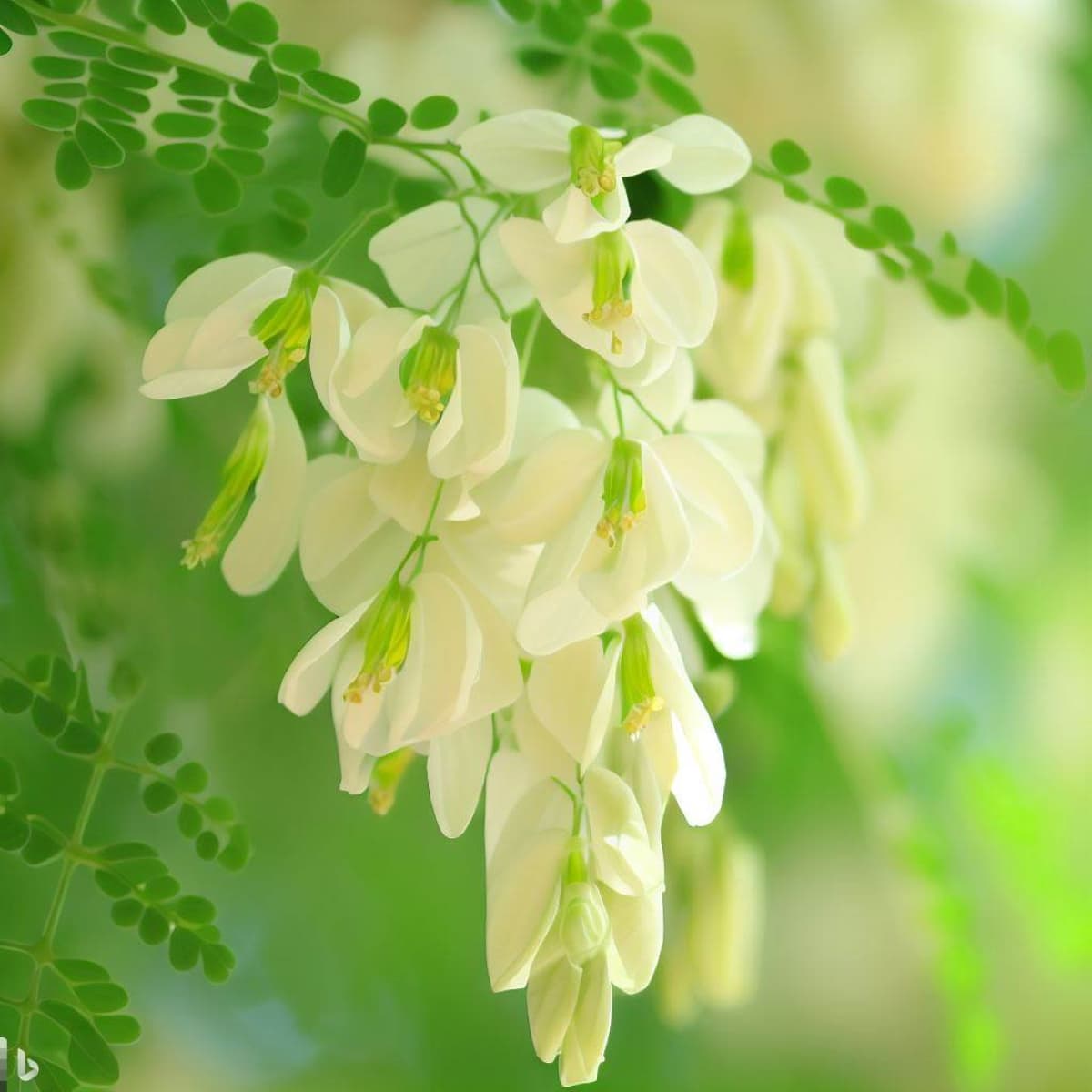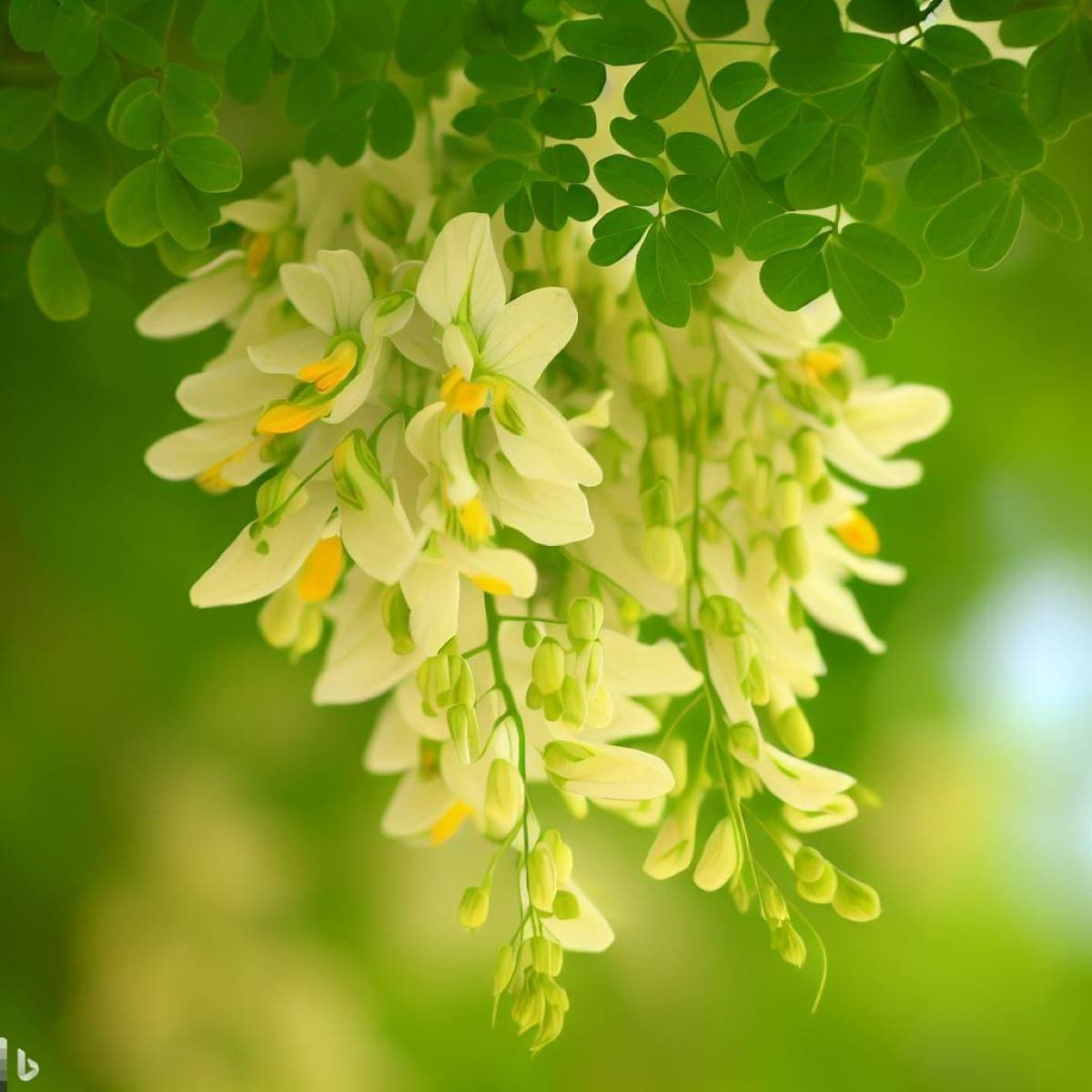“Unlocking the Mystery: Why Do Moringa Flowers Turn Red? Discover the Causes, Solutions, and Care Tips to Preserve Their Vibrant Hue. Delve into Environmental Impact, Genetic Factors, and Soil Conditions Influencing Color Variation. Learn Best Watering Practices and Temperature Effects for Healthy Blooms. Cultivate Red-Flowered Varieties with Expert Insights. Understand Sunlight’s Role in Flower Reddening. Explore Nutritional Deficiencies and Effective Maintenance Strategies. Elevate Your Moringa Flower Care with Comprehensive Guidance.

Why Moringa Flowers Turning Red
Understanding the Phenomenon of Red Moringa Flowers
Moringa flower color is influenced by the presence and concentration of anthocyanins, which produce red, purple, and blue hues in plants. These pigments produce responses to environmental and biological stimuli like temperature, light, nutrients, stress, and genetics. Moringa flowers can range from white to pink to red depending on the type and amount of anthocyanins present.
Different color variations exist depending on the species, variety, and cultivar of the plant. Some species, like Moringa oleifera and Moringa stenopetala, have predominantly white flowers, while others, like Moringa hildebrandtii and Moringa ovalifolia, have pink or purple flowers. Within each species, there may be different cultivars with different flower colors or patterns.
Environmental Factors Leading to Reddening
Red moringa flowers are a result of environmental stress, which triggers the production of anthocyanins as a protective mechanism. Factors like temperature fluctuations, sunlight intensity and duration, water availability, and soil conditions can cause this stress. Temperature fluctuations affect the activity of enzymes that synthesize anthocyanins, resulting in lighter flowers and less anthocyanin production.
Conversely, sunlight intensity and duration affect the balance between anthocyanins and other pigments, such as carotenoids and flavonoids. High sunlight intensity can increase carotenoids and flavonoid production, masking the effect of anthocyanins and resulting in lighter flowers. Conversely, low sunlight intensity can decrease carotenoid and flavonoid production, enhancing or revealing the effect of anthocyanins and resulting in darker flowers. Therefore, moringa flowers turn red when grown in shady or cloudy conditions.
Nutritional Influences on Moringa Flower Color
Nutrition plays a crucial role in the color of moringa flowers by influencing the availability and uptake of essential nutrients for anthocyanin synthesis. Nutrients such as nitrogen, phosphorus, potassium, magnesium, iron, manganese, zinc, and boron are essential for anthocyanin synthesis. Soil nutrient deficiencies can cause red moringa flowers by limiting the supply of these nutrients. Nitrogen deficiency reduces the production of amino acid precursors for anthocyanins, resulting in less anthocyanin formation and redder flower colors.
Phosphorus deficiency impairs sugar transport, leading to more anthocyanin accumulation and redder flower colors. Potassium deficiency affects the pH and osmotic balance of plant cells, affecting the stability and solubility of anthocyanins, resulting in more anthocyanin leakage and redder flower colors. Balanced fertilization practices are essential for maintaining healthy moringa plants and preventing or correcting nutrient deficiencies that can cause red moringa flowers.
Watering Practices Affecting Flower Hue
Watering practices can impact the color of moringa flowers by affecting the water status and hydration of plant cells. Water is crucial for plant growth and metabolism, and it affects the concentration and distribution of anthocyanins within plant tissues. Overwatering can cause red moringa flowers by diluting anthocyanin concentrations, resulting in lighter colors. This can also lead to root rot, fungal infections, and nutrient leaching, affecting plant health and flower quality.
In case you missed it: Best Fungicide for Rice Sheath Blight: Discover 100% Effective Treatment with These Top 10 Fungicides

Underwatering can cause red moringa flowers by increasing anthocyanin concentrations, resulting in darker colors. This can also lead to wilting, drought stress, and nutrient deficiencies. Optimizing watering schedules for color stability is essential for maintaining healthy moringa plants and preventing water stress that can cause red moringa flowers. Deep, infrequent watering encourages deep root growth and avoids waterlogging or soil drying.
Genetic and Biological Causes of Color Change
Various factors, including genetic variability, stress responses, and soil conditions, influence red moringa flowers. Genetic variability, a natural phenomenon resulting from mutations and recombination, can introduce new alleles or variants of genes that affect anthocyanin synthesis, resulting in different shades or hues of red.
Stress responses, biological reactions plants use to cope with adverse conditions, can activate or enhance the expression of genes that regulate anthocyanin synthesis. Stress hormones or signals, such as ethylene, jasmonic acid, salicylic acid, or abscisic acid, can induce or increase the production of anthocyanins as a defense mechanism against oxidative damage or pathogen attack, resulting in redder flower colors.
Soil Conditions and Their Impact on Flower Color
Soil conditions can influence the color of moringa flowers by affecting the interaction between plant roots and soil microorganisms. Soil microorganisms play a crucial role in decomposing organic matter, cycling nutrients, fixing nitrogen, producing hormones, and enhancing plant growth. Red moringa flowers are caused by the availability and uptake of nutrients involved in anthocyanin synthesis. Soil pH, a measure of soil acidity, affects the color of moringa flowers by affecting the solubility and mobility of nutrients involved in anthocyanin synthesis.
For instance, iron is more soluble and available in acidic soils (pH < 7) than in alkaline soils (pH > 7), resulting in redder flower colors. To adjust soil composition for desired flower color, soil pH can be modified by adding lime or sulfur, organic matter by applying compost, manure, mulch, or green manure, and amendments by applying gypsum or biochar to improve soil structure and drainage.
Preventive Measures and Care for Healthy Moringa Flowers
Moringa plants require regular watering, pruning, adequate sunlight, pest protection, and mulch to maintain their health and growth. Environmental stressors like temperature extremes, drought, wind, pollution, and pests can negatively affect plant health and growth. Regular monitoring is essential to identify signs of damage, discoloration, wilting, or infection. Best practices in moringa plant care include:
- Choosing the right location, soil for planting seeds or seedlings.
- Proper spacing for air circulation and light penetration.
- Using organic or natural fertilizers.
- Harvesting flowers when they are fully bloomed and before they wilt.
- Storing flowers in a cool and dry place.
Corrective actions should be taken as soon as possible if any signs of damage are detected. By following these practices, moringa plants can thrive and thrive in their natural environment.
Corrective Actions for Reddening Moringa Flowers
Reddening moringa flowers can be caused by various environmental factors, including frost, heat, drought, flooding, pollution, and salinity. Frost can damage plant cells, causing flowers to turn red. To prevent this, cover plants with a cloth or plastic sheet during cold nights or move them indoors. Heat can cause water loss or sunburn, so watering plants more frequently during hot days or providing shade can help. Drought can cause water stress or nutrient deficiency, so regular and deep watering or using drip irrigation systems can help.
In case you missed it: Effective Management of Arecanut Pests and Diseases: A Comprehensive Guide

Flooding can cause flowers to turn red due to root rot or oxygen deprivation, so avoid overwatering or improve soil drainage. Pollution can cause flowers to turn red due to toxic substances or pH imbalance, so avoid planting moringa near pollution sources or use filters or barriers. Salinity can cause flowers to turn red due to salt accumulation or osmotic stress, so avoid planting moringa in saline soils or use desalination methods. Adjusting environmental conditions can also help prevent or correct reddening moringa flowers.
Nutritional Supplements and Soil Amendments
Nutritional supplements and soil amendments can help prevent or correct reddening moringa flowers. These include applying foliar sprays with micronutrients, adding organic matter or compost to improve soil structure and fertility, incorporating lime or sulfur to adjust soil pH, mixing gypsum or sand to improve soil drainage and aeration, and applying biochar or charcoal to increase soil carbon and water retention. Climate change plays a role in altering flower coloration due to changes in temperature, precipitation, carbon dioxide, ozone, and ultraviolet radiation.
Temperature affects the synthesis and stability of pigments, while precipitation affects water availability and stress. Carbon dioxide affects photosynthesis and respiration, while ozone affects oxidative stress and damage. Ultraviolet radiation affects the protection and attraction of plants and flowers, leading to more colorful flowers. Analyzing long-term climate effects on plant physiology is essential for understanding how climate change affects moringa plants and flowers’ health and growth. Methods include:
- Measuring physiological parameters under different climatic conditions.
- Comparing physiological responses of different moringa varieties or cultivars.
- Monitoring changes in physiological performance over time.
- Evaluating adaptation mechanisms.
Adapting Cultivation Practices to Mitigate Climate Impact
- Selecting moringa varieties or cultivars that are more tolerant or resistant to different climatic stressors.
- Breeding moringa varieties or cultivars with improved traits for different conditions.
- Introducing moringa varieties suitable for different climatic zones or regions.
- Diversifying moringa production systems with other crops or plants.
- Implementing moringa agroforestry systems to enhance ecosystem services or resilience.
In case you missed it: Ultimate Guide to Managing Pests and Diseases in Cassava: 100% Effective Strategies for Control and Treatment

Conclusion
Moringa flowers are valuable for beauty, nutrition, medicine, and other uses but are vulnerable to environmental stressors. To prevent reddening, growers should follow preventive measures, monitor stressors, adjust conditions, apply supplements, analyze climate effects, and adapt cultivation practices.
- Beneficial Insects in Pest Management
- Natural Solutions for Pest Control in Flower Gardens
- Types of Fungicides Used in Agriculture
- Common Issues in the Fruit Development Stage of Pomegranate Farming
- Fruit Development Issues in Papaya: Easy Solutions and Treatment
- Soil-Borne Diseases and How to Protect Your Plants
- Practices to Prevent Disease Spread in the Garden
- From Wilted to Thriving: How to Treat Root Rot Naturally in Houseplants
- Natural Remedies to Cure Brown Spots on Fig Tree Leaves